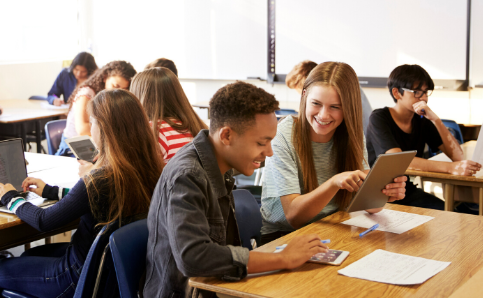In today’s technology-driven world, mastering digital collaboration tools is an essential skill for students. These tools not only enhance communication and teamwork but also prepare learners for the digital demands of college and the workplace. Schools are increasingly incorporating digital collaboration into the classroom to build these foundational skills, recognizing that being fluent in digital teamwork is now as important as traditional academic competencies.
Digital collaboration tools include platforms such as Google Workspace, Microsoft Teams, Zoom, Slack, Trello, and a variety of project management and file-sharing apps. These platforms allow students to work together in real time, share documents, brainstorm ideas, manage tasks, and track project progress. Learning to navigate and use these tools effectively can boost student productivity and confidence. Students can comment on each other’s work, update files simultaneously, and communicate efficiently, regardless of location.
To help students master digital collaboration tools, educators often integrate them into daily assignments and group projects. For example, students may collaborate on a shared presentation, co-edit a research paper, or use video conferencing to conduct peer reviews or mock interviews. These activities teach students how to divide responsibilities, meet deadlines, and communicate clearly online. Group tasks often simulate real-world work environments, giving students a head start in understanding digital workplace dynamics.
It’s also important to teach digital etiquette and best practices. Understanding how to write professional messages, respect others’ input, and maintain organized digital spaces are all key elements of successful online collaboration. Schools may offer workshops or modules focused on these soft skills, which are just as critical as technical proficiency. Discussions around tone, response time, file naming conventions, and respectful disagreement contribute to a positive digital culture in the classroom.
Teachers can support students by modeling the use of collaboration tools during lessons. Demonstrating how to organize shared folders, assign roles in a project, or hold virtual meetings provides a framework that students can follow. Encouraging feedback and reflection after each digital project also helps students improve and grow in their use of technology. In some schools, digital peer mentors help classmates who are less confident in using these tools, fostering both collaboration and leadership.
Furthermore, giving students access to a variety of tools allows them to find platforms that suit their learning styles and project needs. Whether it’s using a whiteboard app for brainstorming, a calendar app for scheduling, or a task board for workflow management, familiarity with diverse tools builds adaptability and problem-solving skills. Exposure to multiple tools also helps students understand which types of platforms are best suited for different kinds of tasks, an ability that will serve them well in higher education and future employment.
Some schools go a step further by incorporating real-world simulations and partnerships into their digital collaboration programs. Students may work with peers from other schools or communities, simulate business projects, or interact with local organizations on service-based assignments. These experiences teach accountability, cultural awareness, and effective long-distance communication.
Digital citizenship is another key element. Mastering collaboration tools goes hand-in-hand with understanding internet safety, protecting personal data, and navigating online interactions with care. When students understand their role in maintaining safe and respectful online spaces, they are more likely to make ethical decisions and support inclusive learning environments.
By mastering digital collaboration tools, students become more effective communicators and team players. These skills support academic success, enhance creativity, and lay the foundation for future career readiness. With continued practice and guidance, students can thrive in collaborative digital environments both in school and beyond. As the digital world continues to evolve, being fluent in these tools will remain essential for lifelong learning and success.













